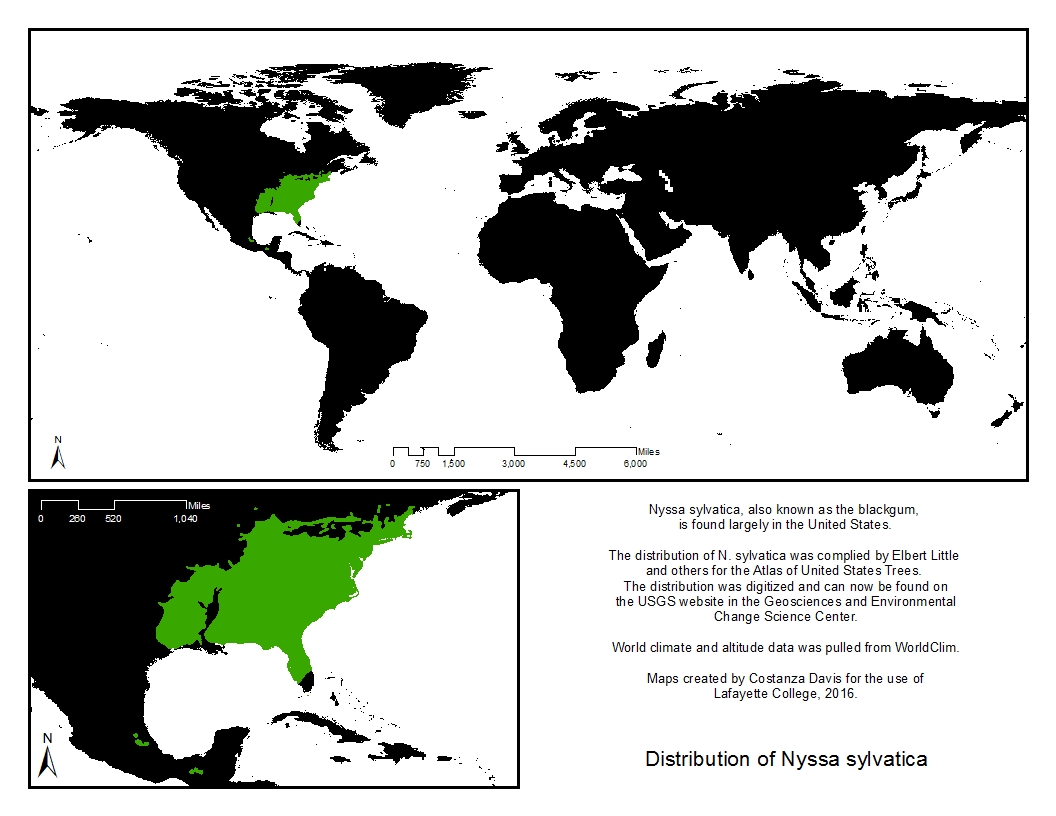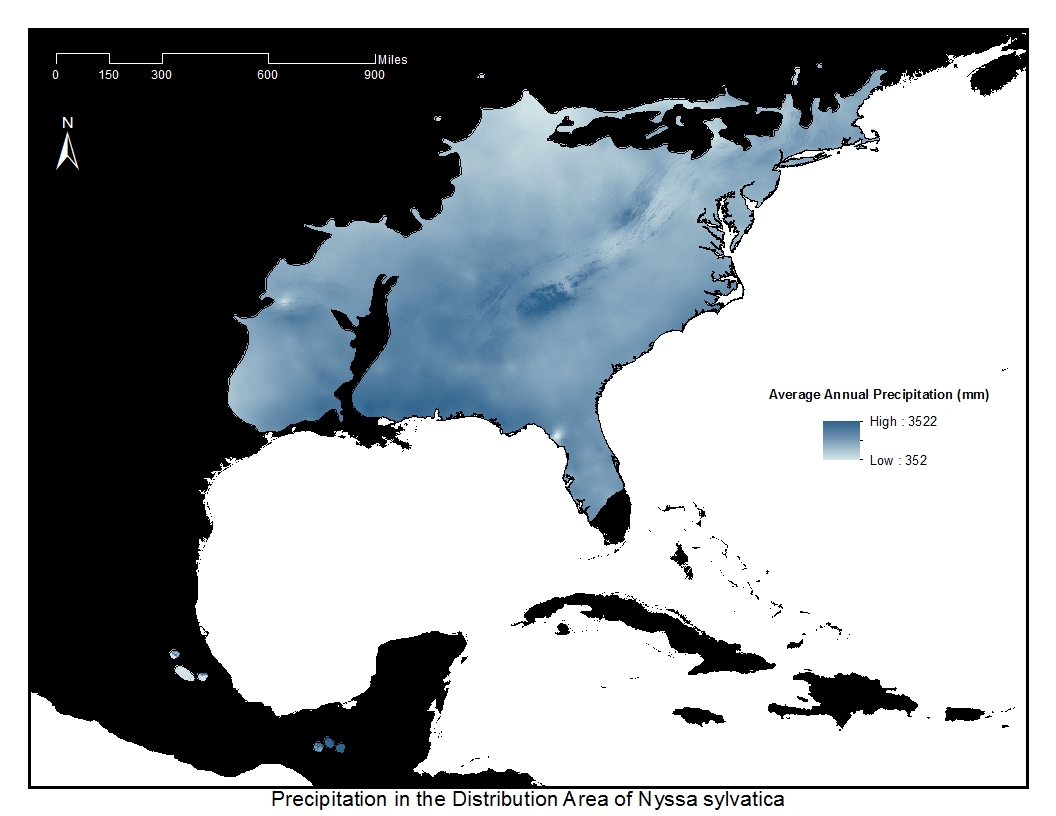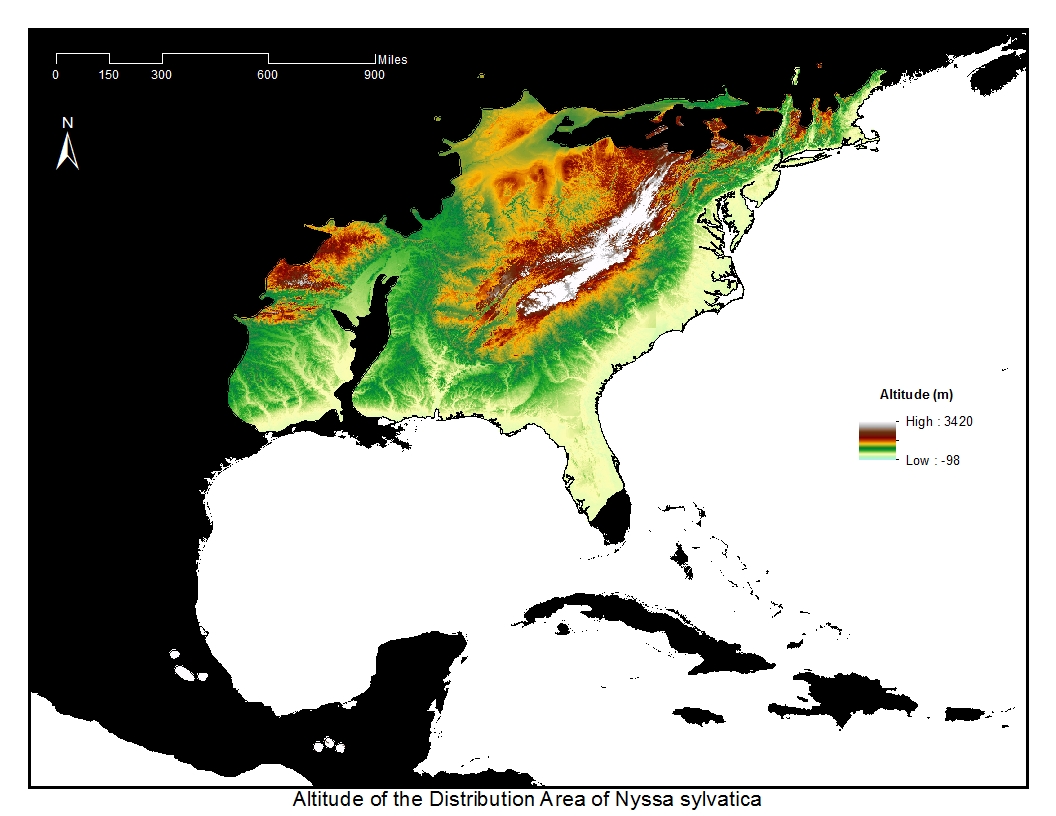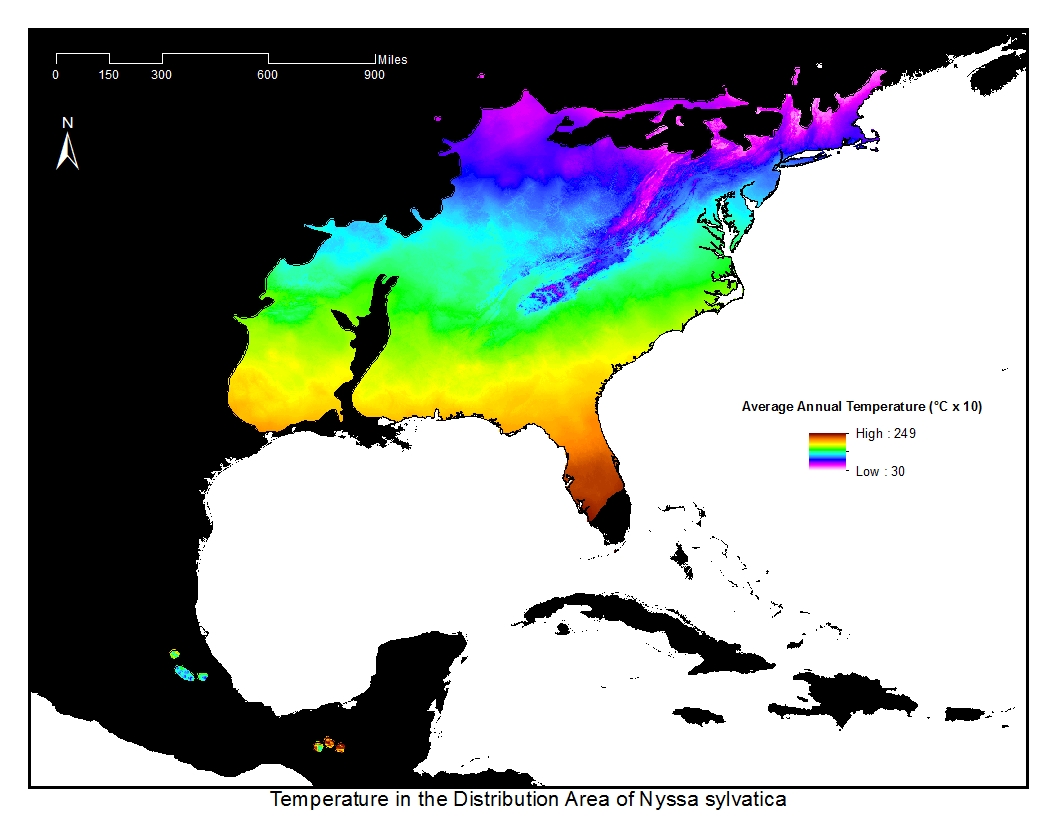Black tupelo, Nyssa sylvatica, has two common varieties. One is the typical black tupelo, var. sylvatica, and the other is the swamp tupelo, var. biflora. The two are usually distinguishable by the habitat difference, and are otherwise difficult to differentiate. Unfortunately, it is difficult to tell which is present at Lafayette College, as most trees are planted and not naturally found on College Hill. Records recognize the Nyssa sylvatica at the college as the black gum. However, both varieties are known by this name. The more common typical black tupelo, var. sylvatica, will be described in this entry, due to the swamp tupelo being more at home in swampier land than present at Lafayette College.
Black tupelo, Nyssa sylvatica var. sylvatica, is also known as black gum, blackgum, sourgum, pepperidge, tupelo, and tupelogum. It has a very wide distribution, which correlates with the wide variety of climates, altitudes, and temperatures. However, rainfall overall in the range averages at 50 inches per year. Variation in the rainfall is dominantly found in when the rainfall occurs, as further south most of the rain occurs in the growing season, whereas the opposite occurs in the north.
At higher altitudes, the tree tends to be smaller. Otherwise, the tree reaches heights of 120 feet and a trunk diameter of 48 inches.
Black tupelo is polygamo-dioecious, meaning that some individuals have bisexual and female flowers, while others have bisexual and male flowers. The flowers appear from April to June, with fruit ripening in September and October and dropping until November. The flowers are very small and tend towards a pale green, while the fruit is about half an inch long and dark blue.
The fruit is eaten by many animals and black tupelo is often used as a den for small creatures. The tree is also good for honey.




